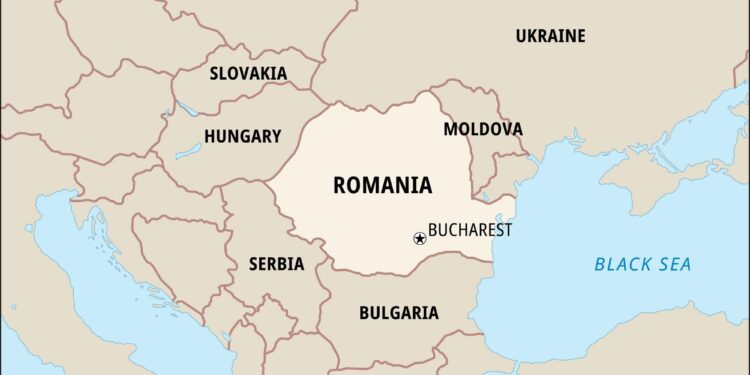Romania’s environmental landscape is garnering increasing attention within the European Union, as highlighted in recent assessments by the European Environment Agency (EEA). With its diverse ecosystems, significant natural resources, and ongoing challenges linked to industrial development and climate change, Romania plays a pivotal role in the continent’s broader environmental agenda. This article explores key findings from the EEA’s latest reports, examining Romania’s progress in areas such as air quality, biodiversity conservation, and sustainable resource management, while also addressing the obstacles that remain on the path to greener growth.
Romanias Environmental Challenges in the European Context
Despite notable progress in environmental policies, Romania faces pressing challenges that hinder its alignment with broader European Union sustainability goals. Key issues include air pollution concentrated in urban and industrial regions, where emissions from transport and outdated manufacturing practices persist. Additionally, deforestation and biodiversity loss remain critical, driven by illegal logging and insufficient natural reserve management. These problems are compounded by inadequate waste management infrastructure and rising water contamination incidents, which pose risks not only to public health but also to vital ecosystems.
Efforts to address these challenges are underway, yet Romania’s pace of change lags behind many EU peers, impacting its environmental performance index scores. Below is a concise overview of Romania’s environmental indicators in comparison with EU averages, highlighting the urgency for targeted interventions:
| Indicator | Romania | EU Average |
|---|---|---|
| Urban Air Quality: PM2.5 (¬Ķg/m¬≥) | 19.7 | 13.5 |
| Forest Cover Change (annual %) | -0.5% | 0.1% |
| Waste Recycling Rate | 15% | 47% |
| Water Body Quality (Good/High) | 40% | 55% |
- Industrial and transport emissions: Primary contributors to urban air pollution hotspots.
- Illegal logging: Undermines forest conservation efforts and carbon sequestration capacity.
- Waste management: Low recycling rates highlight gaps in infrastructure and public awareness.
- Water quality: Pollution from agricultural runoff significantly threatens aquatic ecosystems.
Insights into Air Quality and Water Management Policies
Romania has reinforced its commitment to improving environmental standards by introducing comprehensive measures focused on reducing air pollutants and enhancing water resource management. Recent policy frameworks emphasize reducing industrial emissions, promoting cleaner transportation options, and investing in green urban infrastructure. Compliance with the EU’s directives drives urgent actions targeting particulate matter (PM10 and PM2.5), nitrogen oxides (NOx), and sulfur dioxide (SO‚āā), which are primary contributors to poor air quality in many urban regions. Notably, Romania’s increasing adoption of renewable energy sources and stricter vehicle emission standards represents a significant shift toward sustainable air quality management.
Water management policies have undergone significant revision to address both quantity and quality concerns amid challenges posed by climate change and industrial pressures. Key initiatives focus on:
- Enhancing wastewater treatment infrastructure
- Protecting critical freshwater ecosystems
- Implementing efficient irrigation practices in agriculture
- Strengthening cross-border water resource collaborations
| Policy Aspect | Primary Objective | Implementation Status |
|---|---|---|
| Air Quality Monitoring | Expand sensor networks nationwide | Ongoing |
| Industrial Emissions Control | Reduce pollutant thresholds by 30% | In Progress |
| Water Treatment Upgrades | Increase treatment efficiency by 25% | Planned for 2025 |
| Water Conservation Programs | Promote sustainable water use | Established |
Strategies for Advancing Sustainable Development and Green Transition
Romania’s approach to sustainable development hinges on integrating environmental priorities with economic growth to achieve a resilient green transition. Key initiatives focus on reducing greenhouse gas emissions through widespread adoption of renewable energy sources, promoting circular economy practices, and enhancing energy efficiency across all sectors. The government’s commitment to expanding protected natural areas and investing in green infrastructure plays a critical role in balancing development with biodiversity preservation. Furthermore, digital innovation and smart technologies are being leveraged to optimize resource management and monitor environmental impacts in real-time.
Central strategies driving Romania’s green progress include:
- Scaling up solar and wind energy projects to meet EU climate targets.
- Implementing sustainable agriculture practices that support soil health and reduce emissions.
- Encouraging eco-friendly transportation solutions such as electric vehicle adoption and improved public transit.
- Strengthening environmental education and community engagement to foster a culture of sustainability.
| Sector | 2023 Progress | 2030 Target |
|---|---|---|
| Renewable Energy | 35% of national energy mix | 55% |
| Carbon Emissions | 15% reduction from 1990 levels | 40% reduction |
| Protected Areas | 22% land coverage | 30% |
Insights and Conclusions
In summary, Romania’s collaboration with the European Environment Agency highlights both the country’s environmental challenges and its ongoing commitment to sustainable development within the European framework. As Romania continues to align its policies with EU standards, the data and insights provided by the EEA will remain crucial in guiding informed decisions and fostering a greener future. Monitoring these efforts will be essential to understanding how Romania balances economic growth with environmental responsibility in the years ahead.
















